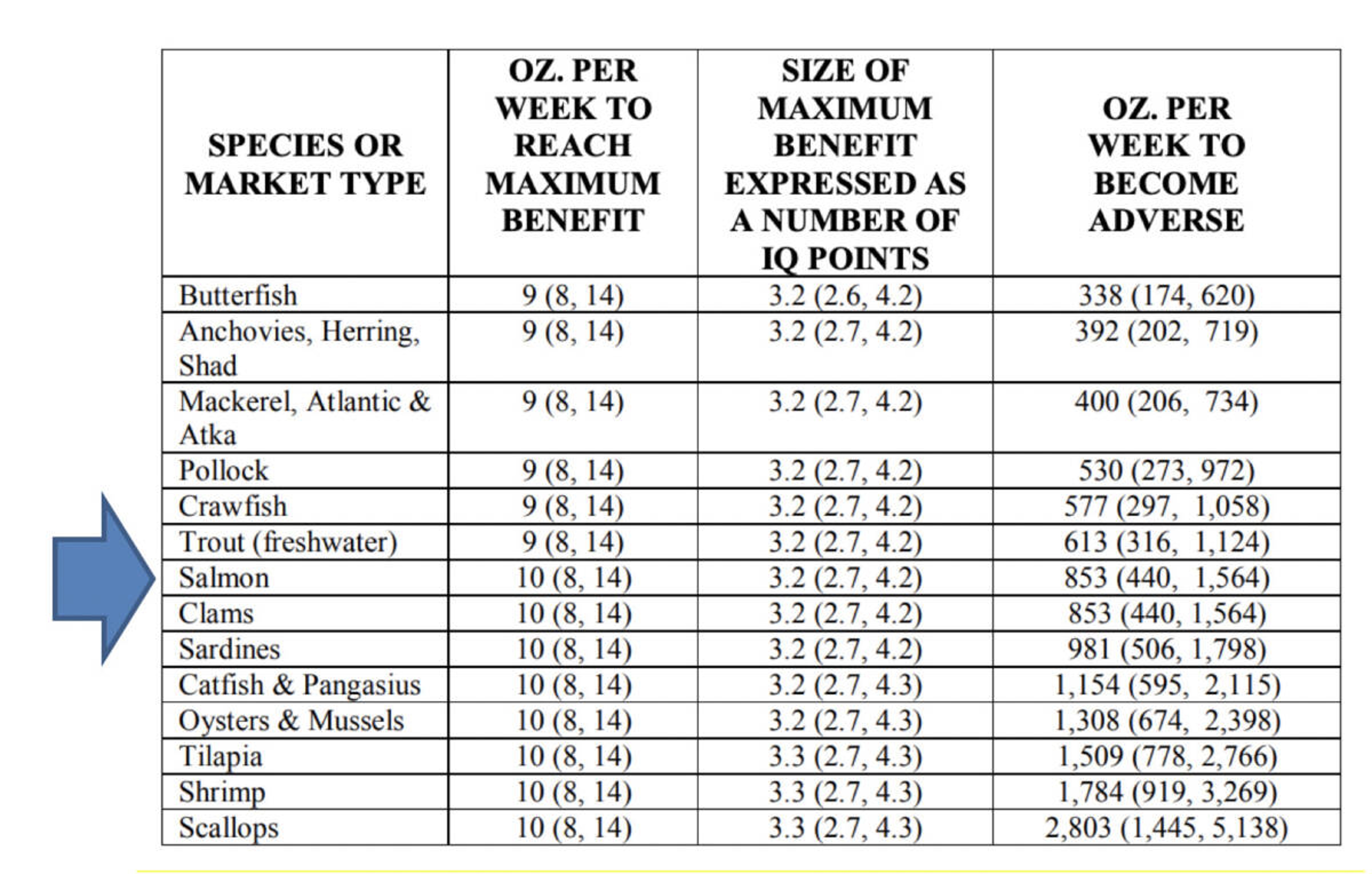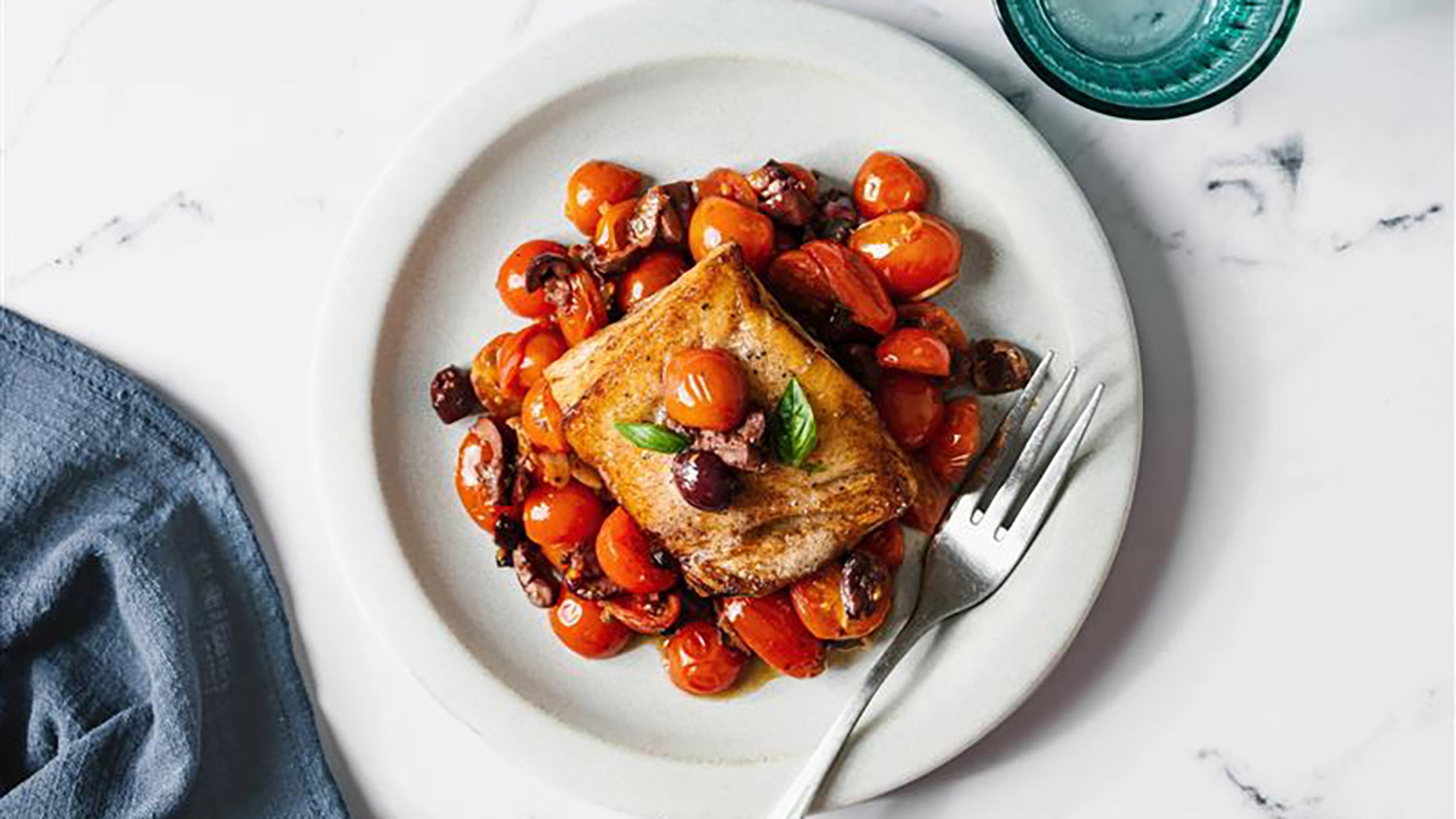There's Mercury in Salmon. So How Much Salmon Can I Eat?
Turns out, it's a lot!
Jun 16, 2023
Perhaps you've come to this site because you'd like to eat more seafood, but are concerned about mercury. The truth is that the real risk for most of us is eating too little fish and ending up with too few omega-3 fats in our diets.
That's especially true for pregnant women and the developing fetus.
The United States government recommends adults eat at least eight ounces of seafood per week. Seafood provides protein, vitamins B12 and D, iron, selenium, zinc, iodine, and those all-important omega-3 fats. Salmon, sardines, crab, and scallops are listed as safe to eat three times a week.
But here's the vital part to know: That doesn't mean you can't eat more. Mercury exposure has been tied to neurological problems in the developing fetus and in children and animals. However, you'd need to eat a lot of seafood, especially salmon (one of the lowest-mercury kinds of seafood), to run that risk.
In fact, in a 2014 U.S. government report, scientists concluded that a pregnant woman could eat up to 53 pounds of salmon a week without putting her fetus at risk of reduced IQ from mercury. Here's part of the chart showing risk from salmon and other relatively low-mercury seafood:

This is part of a chart from the U.S. Center for Food Safety and Applied Nutrition. The numbers in each column represent the median, lowest percentile and highest percentile totals. Note the maximum IQ benefit for the child of a pregnant woman who eats salmon happens when her consumption rate reaches an average of 10 ounces per week. But studies of mercury toxicity suggest the mercury in salmon would not tip the balance into adverse IQ territory unless the woman ate an astonishing 853 ounces – roughly 53 pounds – of salmon per week. Also note that this safety threshold becomes even more absurdly high with scallops. Our pregnant mom could eat 2,803 ounces – roughly 175 pounds – of scallops per week before adverse IQ effects to her child would be expected. For more, see The Ultimate Guide to Making Smart Seafood Choices from the Seafood Nutrition Partnership.
Bountiful benefits
In the same report, the benefits of pregnant women eating seafood were startling. Just 10 ounces of salmon a week, roughly three modest servings, could boost her child's IQ by more than three points, on average, by age nine. And of course, seafood features abundant brain and heart benefits for those of us who are not pregnant.

These slides, from a presentation by Michael Crawford, Director of the Institute of Brain Chemistry and Human Nutrition at Imperial College, London, vividly show the brain-building power of DHA. The fetal rat's brain on the left received abundant DHA from its mother's diet, resulting in a rich supply of cortical neurons, represented as bright yellow. The rat's brain on the right is the result of a deficient DHA supply.
You might worry that pollution is increasing, but current levels of mercury in fish remain low enough for the benefits to far outweigh any risks. In a 2020 study, a team in Portugal analyzed mercury concentrations in Atlantic mackerel, Atlantic chub mackerel, European anchovy, Atlantic horse mackerel, and European pilchard in the Atlantic off the coast of Europe. They found that the mercury content was far below the European Food Safety Authority and World Health Organization food safety thresholds in all species.
One reason to feel safer: Older research assumed that all of the mercury in fish was 100% bio-available; that is, capable of circulating in your blood and tissues in a way that could harm you. The new quest is to determine bio-availability, which varies widely, but is rarely 100%, and usually much lower.
How much is too much?
Suppose you become inspired to eat seafood every day. Will mercury (or other toxins) hurt you? The American journalist Paul Greenberg actually spent a year eating seafood at every meal, in every form he could think of, including spaghetti and fishballs.
His omega-3 levels rose. “I had around 11% omega-3 levels in my blood — most Americans are below 5%. A finding above 8% is desirable. Somebody said to me that I had the blood of a Sicilian fisherman circa the 1890s," he told a reporter for the Today show.
His mercury levels also rose, but with no apparent bad effects. When he returned to eating two to three portions of seafood a week, those mercury levels fell again. Although mercury can increase your risk of high blood pressure in high doses, in a large meta-analysis Americans generally had mercury exposure that was too low to produce this effect. Greenberg said his blood pressure didn't budge during his year-long binge.
What about other toxins?
When it comes to risks from other toxins, including polychlorinated biphenyls (PCBs), dioxins, and pesticide residues, seafood once again appears vindicated. The vast majority of the PCBs and dioxins in the U.S. food supply come from non-seafood sources, including meats, dairy, eggs, and vegetables.
In short, Americans don't need to worry that eating common varieties of fish or shellfish in generous amounts will harm them. They would be better advised to eat these regularly for the many advantages that this nutrient-rich food provides – especially the fatty acids DHA and EPA, which are essential for brain and heart health, and difficult to get from other food sources. This is especially true for pregnant women, who need abundant DHA and EPA to supply the developing fetus' brain with the building blocks it needs to achieve its IQ potential.
If mercury in seafood remains a concern for you, stay away from large predator fish such as swordfish, king mackerel, fresh bigeye tuna, shark, and orange roughy, where mercury can tend to bioaccumulate. Gorge instead on cod, crab, flounder, haddock, oysters, salmon, sardines, scallops, and shrimp, where mercury concentrations are so low that even the most voracious fish-eating pregnant woman can't consume enough to cause harm.
Wild Alaskan salmon in particular is an excellent choice. The Alaska Department of Environmental Conservation, which samples thousands of fish, has determined, “All species of Alaska wild salmon have very low levels of mercury." And salmon is among the richest sources of vital omega-3 fatty acids — a classic win-win.







